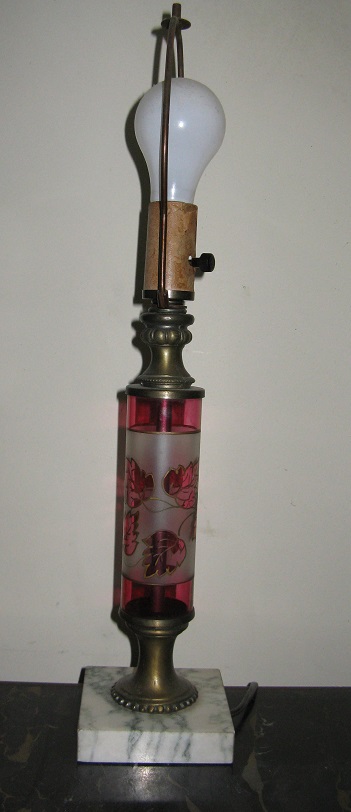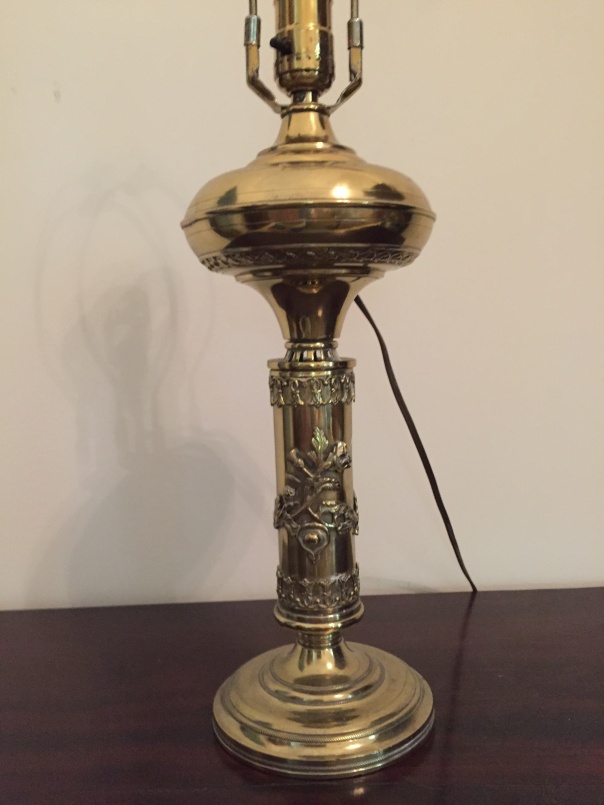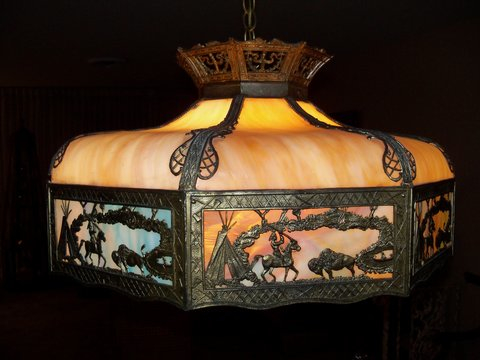
An lamp enthusiast and reader of my lighting books, “American Lighting 1840-1940″ and “Antique Lamp Buyer’s Guide”, sent a group of photos and the question below.
Question:
These are, I believe, ruby flash or cranberry glass. I’ve found similar online but not a real match, although it’s hard for me to believe they’re one of a kind. Actually, of the four I have, three (a pair and a single) are of the same family and the fourth is quite different. No markings that I can detect, although I haven’t opened them to see if there might be any marks inside the base.) I’d love to know something of their date, what kind of shades they may or may not have had, what’s the appropriate way to dress them today, etc.
Many thanks,
D.C.
Response:
Based on the lamp necks that attach on to the portion holding the electric light socket, the lamps in this collection all appear to be from the mid 20th century. I’m thinking either 1920s colonial revival inspired or post World War II. The lamp pictured above is a beautiful combination of satin glass with the cranberry leaves and painted gold. Flash vs. cranberry glass that was dipped after the fact to create the satin finish could be ascertained by taking the lamp apart and looking at the interior. From this vantage point I am going to guess flash.

The next photograph below, looks to be Czechoslavakian Bohemian glass, very popular at from 1900 on until the 1960s.

The final lamp, in the group (below). is styled to appear to be an antique fluid lamp but its construction appears to be 20th century and is either 1920s or post WW 2. Its origin is likely American, probably from the Ohio, Virginia, West Virginia region of the U.S. where many lovely examples of glassware was manufactured. There are still reproductions of earlier styles being made and cranberry glass was extremely popular in the 1950’s and 1960s.,(If anyone who reads this wants to chime in with a specific company please do). The technique is overlay, where you have two layers of glass to create the decoration. This contrasts with the technique of placing a stencil over the glass and dipping it in an acid bath to eat away at the glass surface, thereby creating a design in the negative.
)
Enjoy your lamps!

